Specs., fillrate and shading
Let's take a look at the cards' basic vital statistics.| Card | XFX GeForce 7800 GT | NVIDIA reference 7800 GTX | GeForce 6800 Ultra | SAPPHIRE RADEON X1800 XL | ATI RADEON X850 XT |
| Manufacturing process | 110nm | 110nm | 130nm | 90nm | 130nm |
| Interface/speed | PCI-Express | PCI-Express | PCI-Express | PCI-Express | PCI-Express | Onboard memory | 256MB | 256MB | 256MB | 256MB | 256MB | Core speed | 450MHz | 430MHz | 425MHz | 540MHz | 425MHz | Rendering pipelines | 20 | 24 | 16 | 16 | 16 | Fillrate (multi-texturing) | 9GTexels/s | 10.32GTexels/s | 6.8GTexels/s | 8GTexels/s | 8.64GTexels/s | Vertex shading units | 7 | 8 | 6 | 8 | 6 | Shader Model | 3.0 | 3.0 | 3.0 | 3.0 | 2.0b | Memory interface | 256-bit | 256-bit | 256-bit | 256-bit | 256-bit | Memory speed | 1050MHz | 1200MHz | 1100MHz | 1000MHz | 1180MHz | Memory bandwidth (max) | 33.6GB/s | 38.4GB/s | 35.2GB/s | 32GB/s | 37.76GB/s | Online price | £270 | £329 | £299 | £299 | £229 |
How well do the theoretical maximum numbers above translate to actual fillrate/shading performance? Let's investigate.
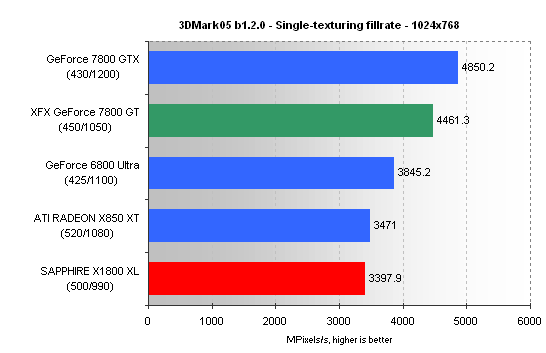
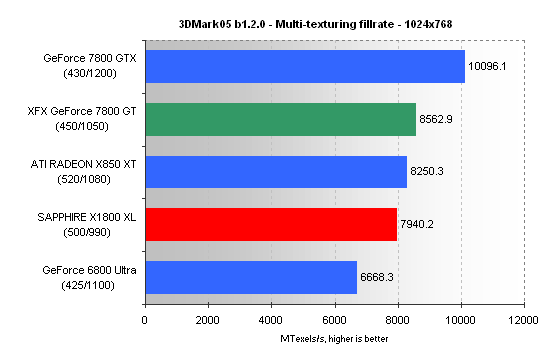
The 20 rendering pipelines of the XFX GeForce 7800 GT beats out the 16-pipe SAPPHIRE X1800 XL in both single- and multi-texturing fillrate. However, fillrate isn't now the defining factor of high-end 3D accelerator performance. Shading is where it's at.
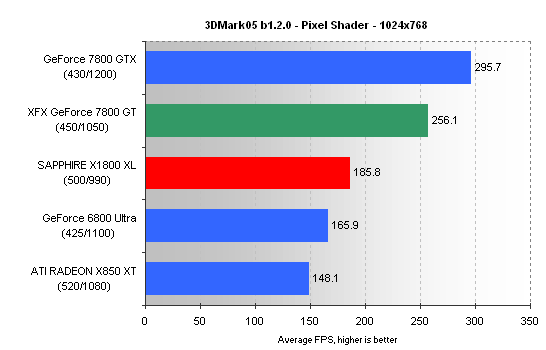
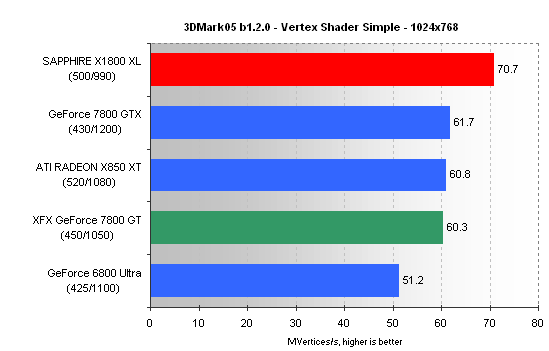
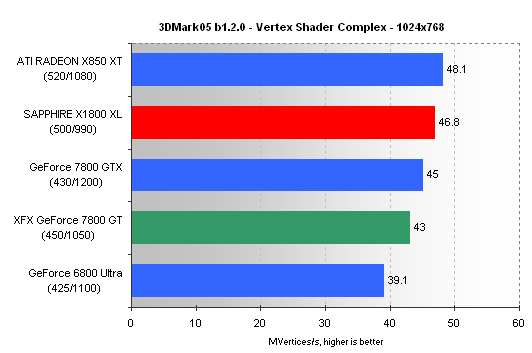
Pixel shading is, as expected, better on the 7800 GT, but vertex shading is still ATI's forte. Swings and roundabouts for these two ~£300 cards.









